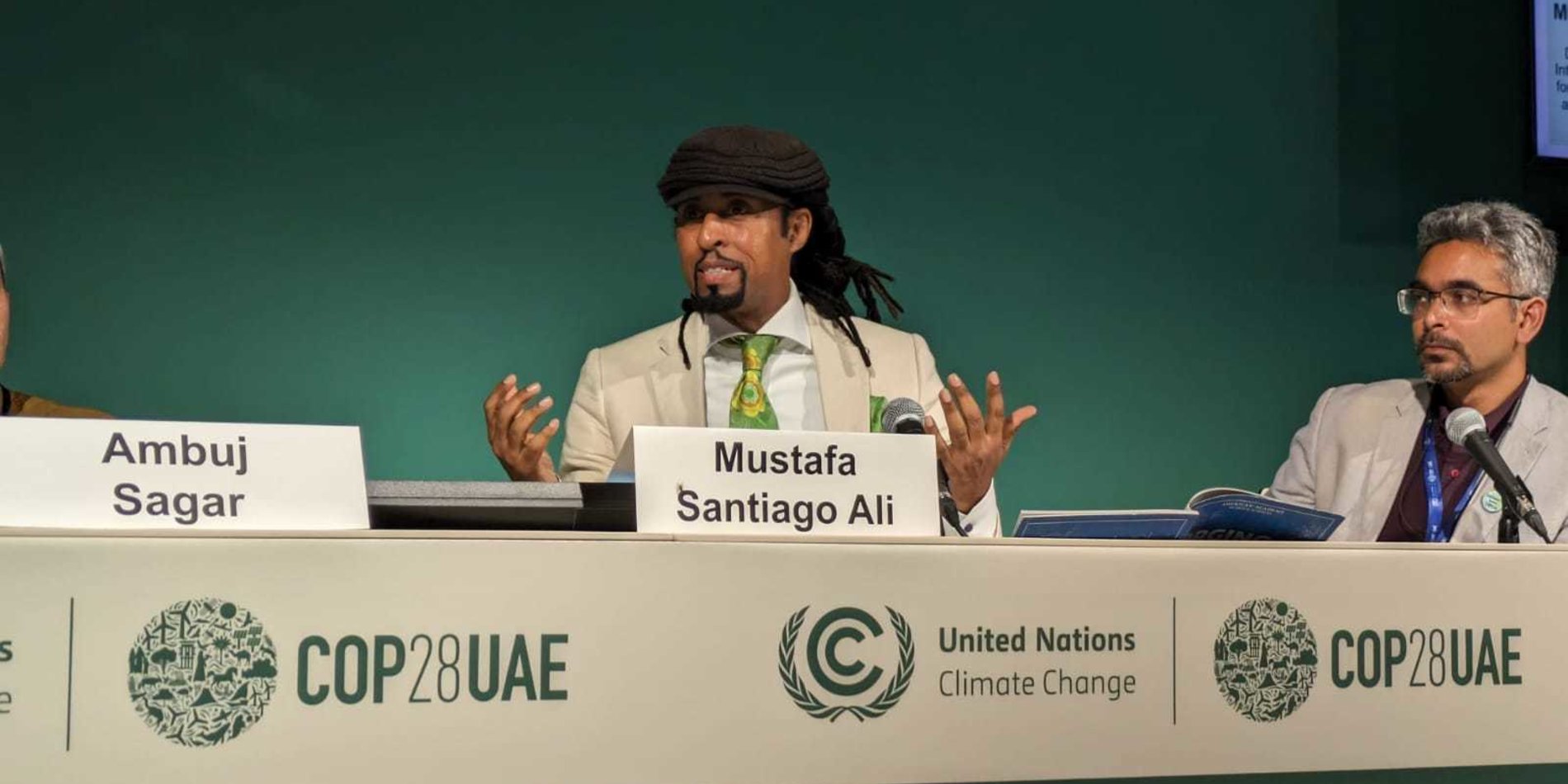The word “acceleration” is top of mind for many people as this year’s negotiations draw to a close at the 28th meeting of the UN Climate Conference of the Parties (COP28). With only a handful of years left to reach the net-zero agreements set out in the Paris Agreement of 2015, nations are racing to phase out unabated fossil fuel consumption and ramp up renewable energy sources.
Stanford co-hosted an official side event with the International Centre for Climate Change and Development (ICCCAD) and the Independent University, Bangladesh to probe a critical tension: nations around the world will need to balance “fast and fair” approaches as they rapidly transition to clean energy technology, safeguard the long-term health of ecosystems, and prepare for lasting community impacts from climate change. The event was one of several co-organized by a delegation of Stanford faculty, scholars, and students attending COP28 in Dubai, United Arab Emirates, to discuss topics ranging from sustainable blue food to youth climate activism.
“How do we take advantage of building things at scale in a way that doesn’t constrain opportunities, doesn’t eliminate options for sustainable development locally, and doesn’t cut off the rights and pathways of Indigenous and rural communities around the world?” asked event moderator Chris Field, director of the Stanford Woods Institute for the Environment.
What counts as climate technology?
Ambuj Sagar, a professor of policy studies at the Indian Institute of Technology, Delhi, emphasized the need to consider a broader definition of climate technology beyond renewable energy in discussions about justice. Integrated assessment models used to influence climate policy, sustainable agriculture practices, and technologies for greenhouse gas removal could all fall under this umbrella, each with a unique set of risks and challenges for communities.“
We have to think critically about how to not only meet the goals of the National Climate Assessment or the IPCC, but also how to meet the goals of everyday people and folks who are living in community. ”
Mustafa Santiago AliExecutive Vice President, The National Wildlife Federation
Marcene Mitchell, the senior vice president of climate change at World Wildlife Fund, said that the organization, “looks at natural solutions and ancient wisdoms first and then marries that with technologies.” For example, an ongoing project in Mexico uses novel modeling and weather technology to map natural coastal benefits from mangroves. Beyond studying the ecosystems, the team is also using the tools to provide community benefits like predicting storms and monitoring fishing conditions.
A recent World Wildlife Fund report provides evidence that accelerating a clean energy future is better than business as usual across almost every dimension, including water and air quality, mining, biodiversity, land use, and human welfare. But taking an approach that centers justice and resilience makes for the “triple win – nature, building communities, and using technology.”
Principles of engagement
As a thought leader, community liaison, and executive vice president of The National Wildlife Federation, Mustafa Santiago Ali has refined his best practices for engaging with communities in climate work. He looks to scholars like Robert Bullard and others who adopted a unifying set of principles at the first National People of Color Environmental Leadership Summit in 1991 to guide the growing environmental justice movement. In addition to educating communities, mobilizing investment, and crafting a diverse set of options, Ali highlighted the need to cultivate a new generation of activists. These “climate ambassadors” can serve as trusted voices in spaces like public health and social media.
“We’re always looking for these new ways of addressing traditional problems. And in many instances, those solutions come from the folks who have been doing the work for a long time. So when you ask that question, it is literally a tapestry of all kinds of different folks that are the sets of warriors and champions to make real change happen,” said Ali.
While technology developers and climate leaders bear a large part of the burden to actively engage communities in decision-making, reaching equitable outcomes requires cooperation. “There needs to be a paradigm shift amongst local community leaders and environmental leaders – particularly around clean energy and accelerating renewables – about how to get to yes versus just saying no,” said Mitchell.
Balancing climate and development
Communities that previously relied on the fossil fuel industry for local jobs and revenue face major shifts as nations implement plans to reduce their carbon emissions. Similarly, many rural, Indigenous, and conservation groups will contend with the rapid introduction of renewable sources to large swaths of land.
But for Sagar, global discussions about how to empower communities at the frontlines of the green energy transition often fail to acknowledge a critical group: those who are sidelined from conversations altogether because of a lack of reliable energy access.
“Unfortunately, to my mind, what’s happening is in the rush to meet climate targets, we’re not giving enough thought to some of these other questions, which would come up if we were doing the right kind of participation,” said Sagar. Especially as nations work to triple renewable energy sources by 2030, he proposes that leaders should integrate plans to expand energy access in concert with efforts to triple renewable energy sources by 2030.
Saqib Huq, assistant director of ICCCAD, and his collaborators are working to dispel the misconception that climate change progress and development are constantly at loggerheads. For example, some worry that limiting fossil fuel use in low- and middle-income countries could hinder economic and social growth. The team uses locally led and context-specific approaches to adaptation, incorporating climate resilience into development plans as part of a joint process.
“When you are leapfrogging in terms of energy technology, in terms of infrastructure and housing, it needs to be done in a just way so that it’s not done to the communities, but done with the communities step by step,” said Huq.
Source : Woods





Add Comment